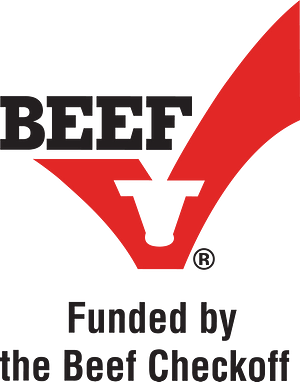
Congress created the checkoff as a producer-directed promotion, research, and information program with passage of the 1985 Farm Bill. Producers approved the mandatory Beef Checkoff Program in 1988 with 79% voting in favor.
The federal legislation requested by cattlemen that created the beef checkoff states that the U.S. Secretary of Agriculture may call a referendum as to the continuation of the program when ten percent of producers request it. Based on the 1997 Ag Census, this would require an estimated 106,000 qualified, valid signatures. Cattlemen would pay the cost of the referendum out of checkoff dollars.
The beef checkoff acts as a catalyst for change. The checkoff doesn't own cattle, packing plants, or retail outlets. It can't single-handedly turn around a bad market. The Beef Checkoff Program was designed to stimulate others to sell more beef and stimulate consumers to buy more beef. This can be done through such initiatives as consumer advertising, marketing partnerships, public relations, education, and new product development. Check out these Beef Checkoff Program accomplishments!
By law, the Beef Checkoff Program cannot be used to influence government policy or action, including lobbying.
Any packer who owns cattle for more than ten days prior to slaughter must pay the $1 per head checkoff. Regardless of the length of ownership many packers pay a voluntary per head assessment. Packers are not represented as an industry segment on the Beef Board.
Beef continues to hold its own on the American dinner table and demand continues to rise. In fact, beef demand has risen almost ten percent since 1998, when it hit the bottom of a 20-year slide. Cattle-Fax estimates the increase in beef demand during the last few years has added about $100 per head to the price of fed cattle and $75 to the price of a 500-pound steer.
By law, the Operating Committee reviews and recommends approval of checkoff programs and must contract with national industry-governed organizations to carry them out. Some of the primary contractors are the National Cattlemen's Beef Association (NCBA), American National CattleWomen (ANCW), the National Livestrock Producers Association (NLPA), the United States Meat Export Federation (USMEF), and the Meat Importers Council of America (MICA). All programs and budgets must be approved by the United States Department of Agriculture (USDA).
The Beef Promotion and Research Act outlines the specific responsibilities of the organizations that comprise the checkoff structure.
Created by the Beef Promotion and Research Act to administer the Beef Checkoff Program, the Beef Board is made up of volunteers nominated by state producer organizations and importers, and appointed by the U.S. Secretary of Agriculture. Duties include certification of state beef councils, evaluation of programs, annual budget approval and overseeing collection of the $1-per-head beef checkoff. Administrative costs for the Beef Board are capped at 5 percent of projected revenue, and the board has always remained well below this level.
State beef councils collect the $1-per-head checkoff and retain control of 50 cents of every dollar to conduct and implement state-level programs that are consistent with the Beef Promotion and Research Act. States may invest a portion of their 50 cents in national programs and then elect producers to serve on the Federation of State Beef Councils Division of the NCBA Board to oversee program development and implementation.
The Beef Promotion Operating Committee reviews and approves national checkoff programs and contracts with national industry-governed organizations to implement programs. The Beef Board selects 10 of its members to serve on the Beef Promotion Operating Committee. Together as the Federation, state beef councils select the other 10 producers to serve on the 20-member committee.
For more information, visit the Cattlemen's Beef Board website.